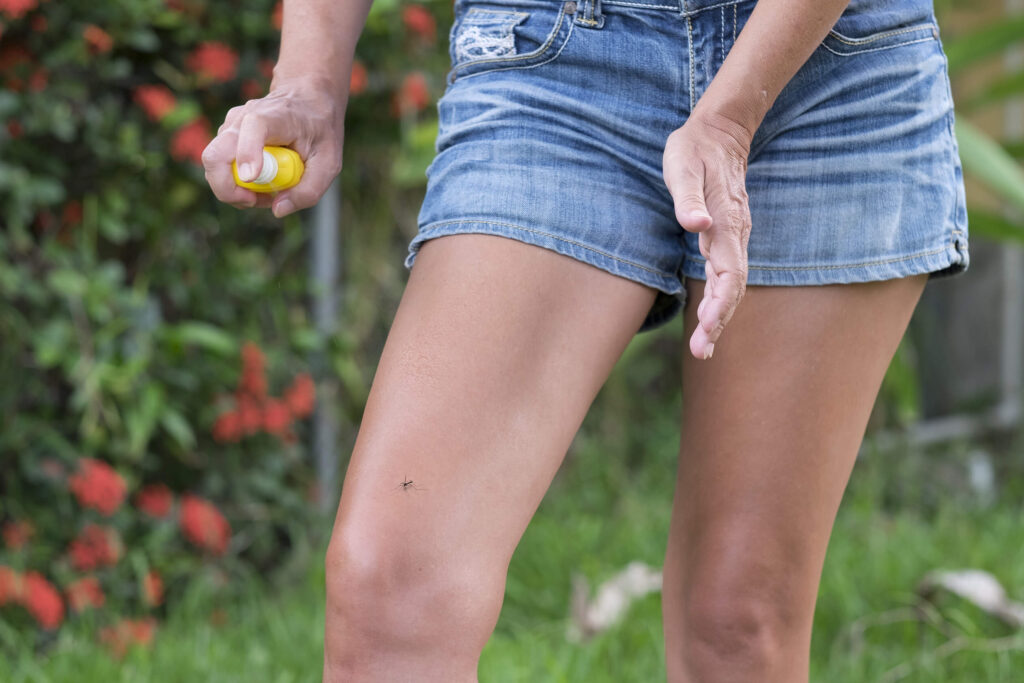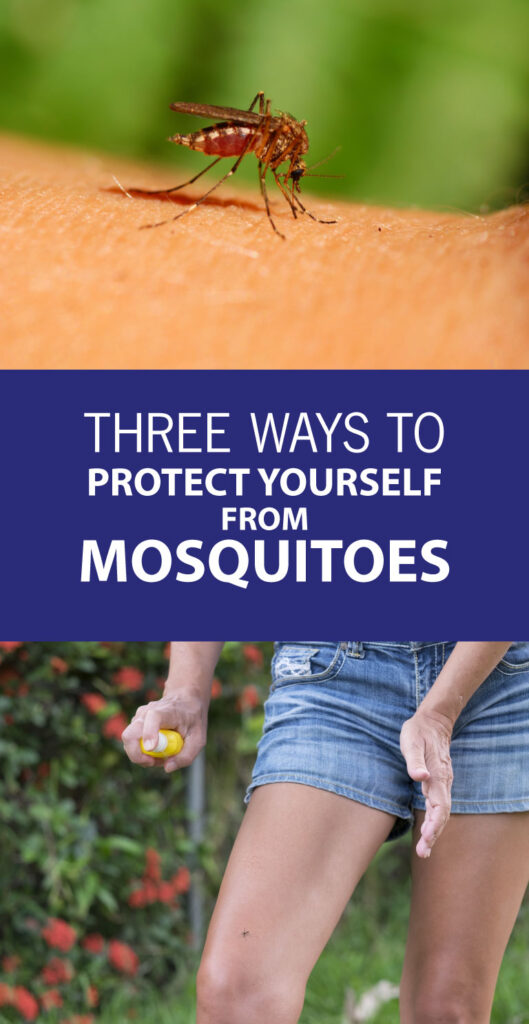 Warm weather is here and the mosquitoes are already biting! With diseases like West Nile virus and Zika that are transmitted by mosquitoes, you’re going to need some protection.
Warm weather is here and the mosquitoes are already biting! With diseases like West Nile virus and Zika that are transmitted by mosquitoes, you’re going to need some protection.
Mosquito Protection
The first step is to avoid getting bitten — wearing long sleeve shirts and pants are a great idea towards avoiding contact with mosquitoes. There are even clothes that are specifically created to protect you from mosquitoes.
However, sometimes it’s just too hot to go outdoors in so much clothing. For some of us, even with most of our skin covered with clothing, the mosquitoes will find a bare spot – a neck, an ear, if its exposed, it will be bitten.
Mosquito Repellents
There are repellents that you apply to your skin and those that you apply to clothing. In my experience, those that are applied to your clothing work very well, but if you are wearing shorts or short sleeves, they aren’t going to help you very much.
Natural vs. DEET Mosquito Repellents
The Centers for Disease Control (CDC) went through lots of peer-reviewed scientific information and data and determined that products containing OLE (Oil of lemon eucalyptus) or PMD (para-menthane-3,8-diol – which is a synthetic version of OLE) are as effective as repellents that contain DEET [Read more from the CDC here]. So if you’re concerned about the possible side effects of using DEET on your skin, then take a look at a botanical repellent that contains OLE or PMD (not essential oils).
Repellents for your Clothing
Permethrin is a repellent as well as an insecticide. It should be applied only to clothing or shoes and will last even after you wash your clothing several times. In my experience, it is very effective. I used to do a lot of field work in Mississippi and Alabama and this was the only product that protected me from red bugs and ticks effectively.
Exposure to permethrin can cause some nasty side effects including skin irritation or burning, nausea or vomiting (if it is ingested), and even difficulty breathing. It is very important that you follow the instructions on any products that include permethrin.
Permethrin is a man-made compound that mimics the function of natural pyrehtrins that can be extracted from chrysanthemum flowers. Learn more here: http://npic.orst.edu/factsheets/PermGen.html#whatis
What is the Best Mosquito Repellent?
The folks at Consumer Reports spent a lot of time and energy (and their own blood!) testing out mosquito repellents to determine which ones work the best against the two mosquito genera that carry disease. Their rankings are based on effectiveness, reliability, safety issues, and other factors.
Based on their results, they recommend (in this order)
- Sawyer Fisherman’s Formula Picaridin (8 hours of protection)
- Ben’s 30% DEET Tick & Insect Repellent: Wilderness Formula (more than 8 hours of protection)
- REPEL Plant-based Lemon Eucalyptus Insect Repellent (7 to 8 hours of protection)
- REPEL Insect Repellent: Scented Family Formula with 15% DEET (5 to 8 hours of protection)
- Natrapel 8 hour Insect Repellent (8 hours of protection)
- Deep Woods OFF! Insect Repellent VIII (DRY) (More than 8 hours of protection)
Read the full report here: http://www.consumerreports.org/cro/insect-repellent.htm
Mosquito Prevention
Mosquitoes breed in standing, stagnant water. Be vigilant about removing standing water from your garden to reduce the number of mosquitoes in your garden.

